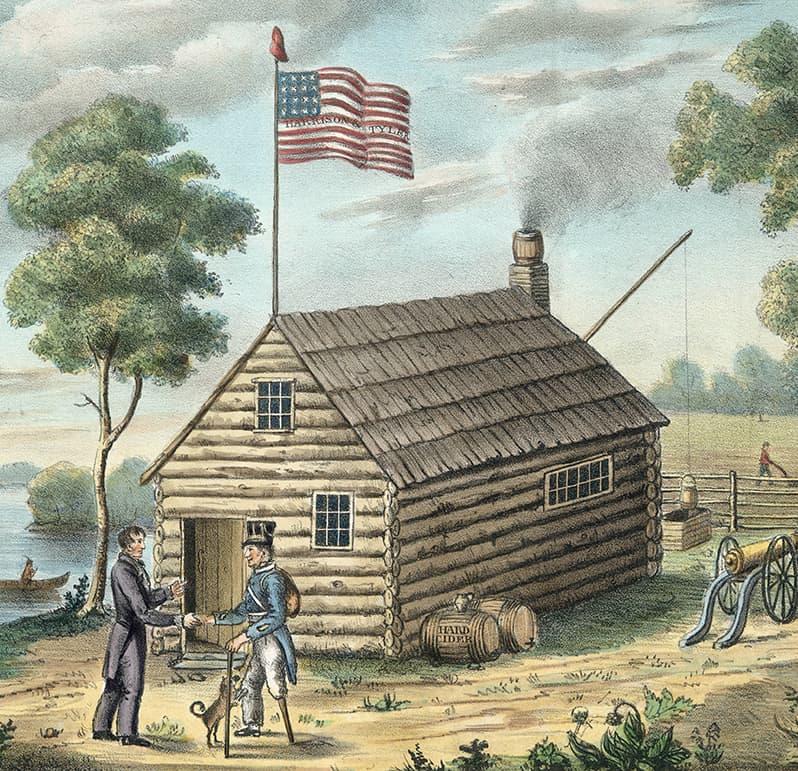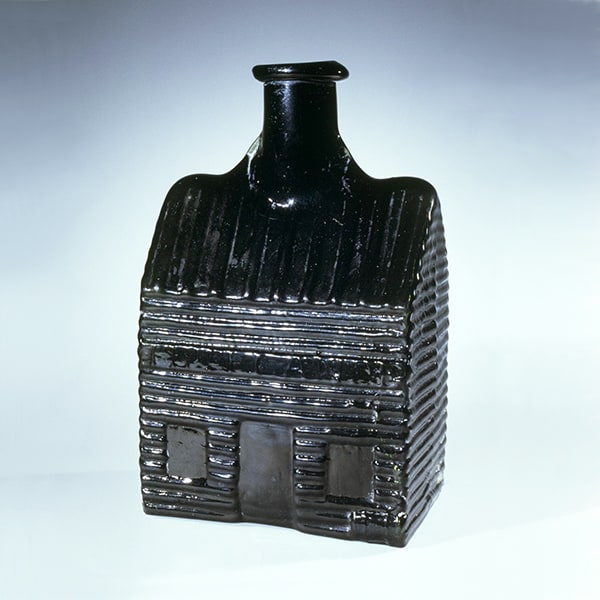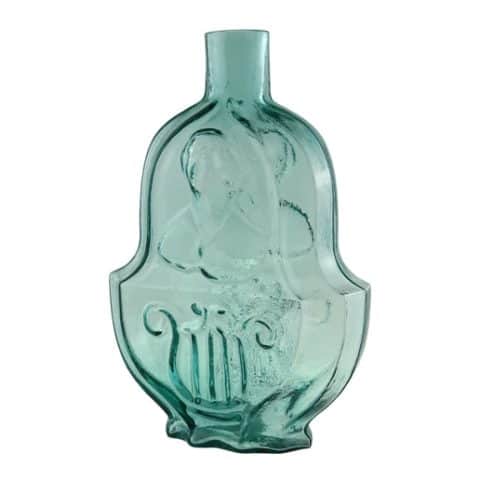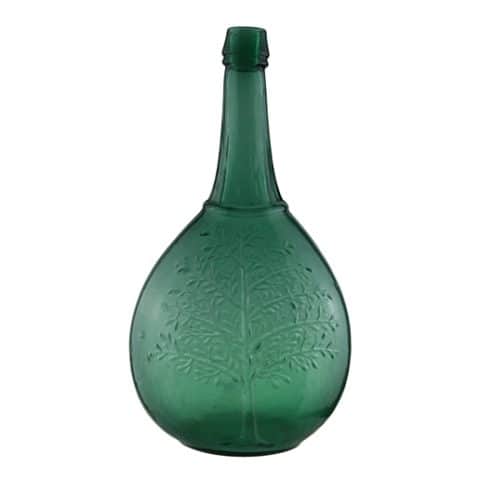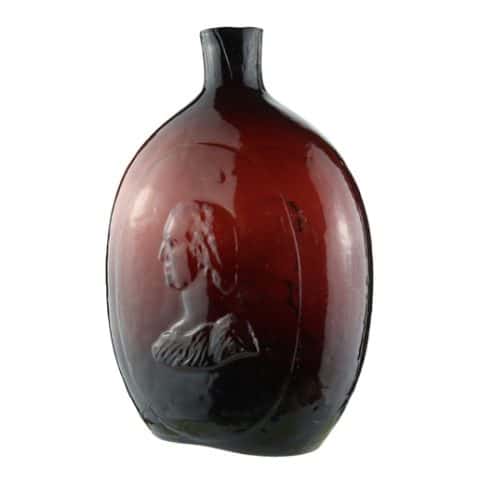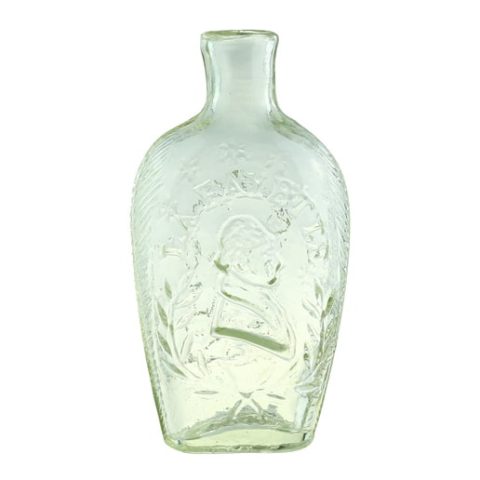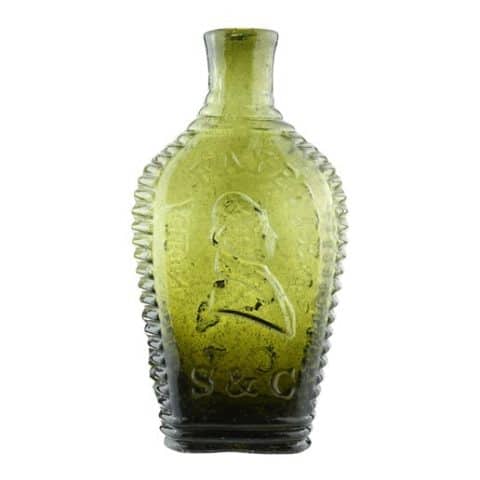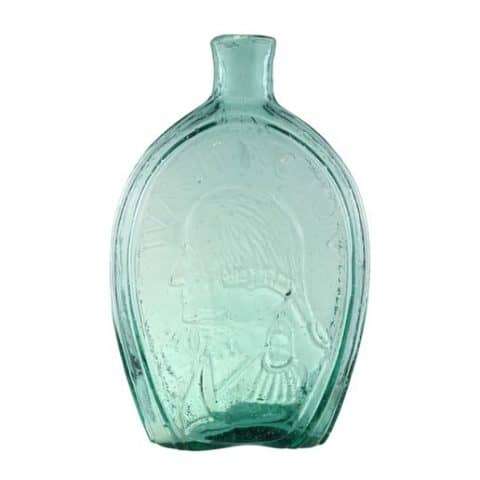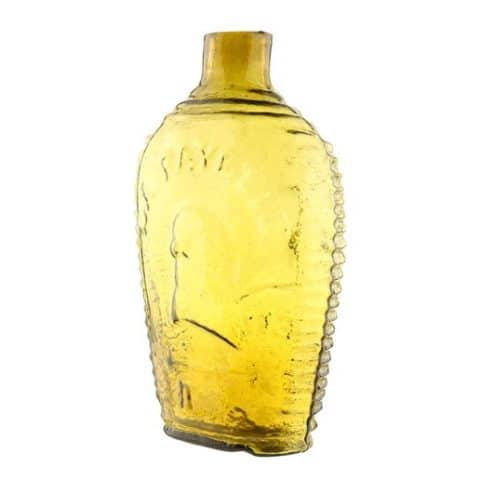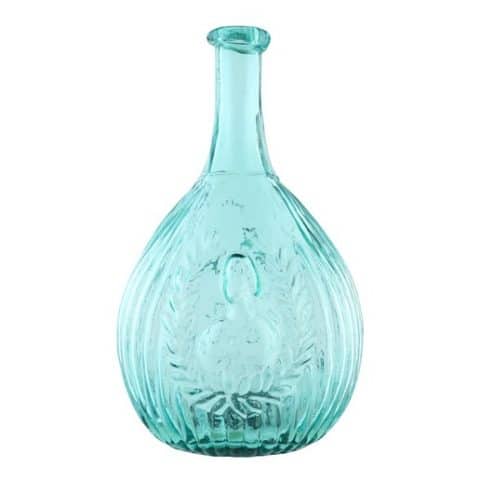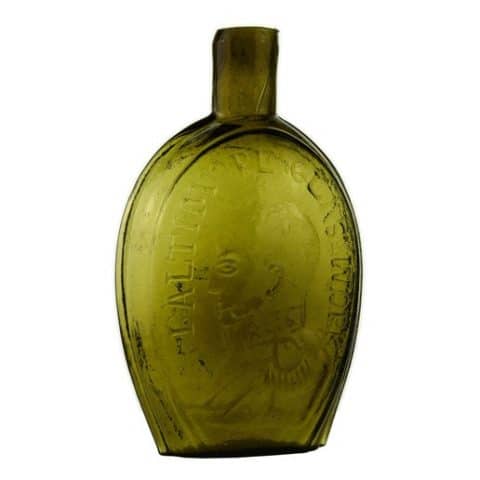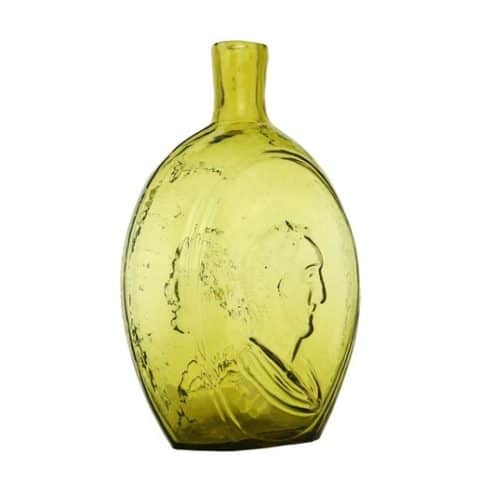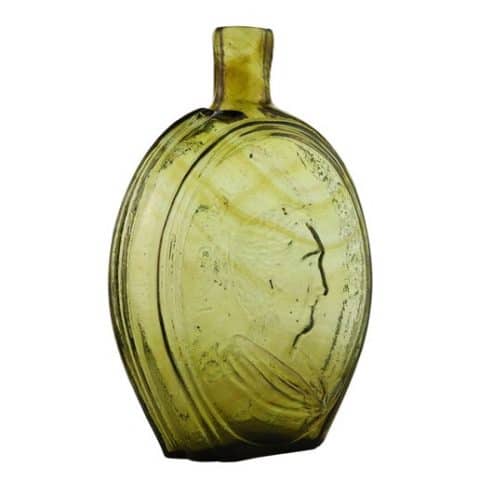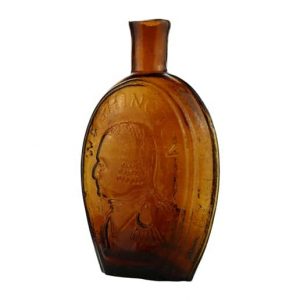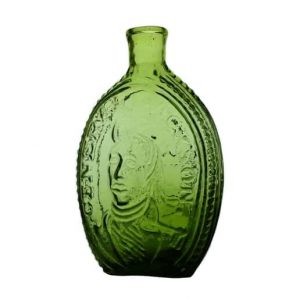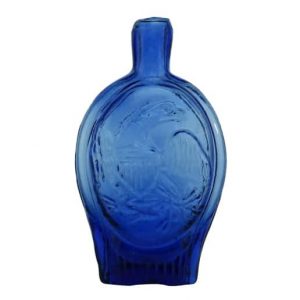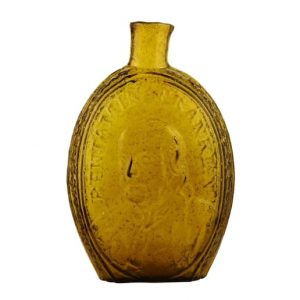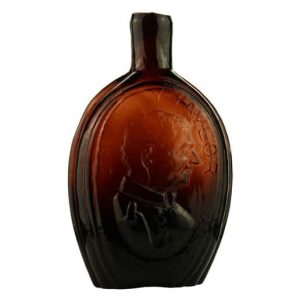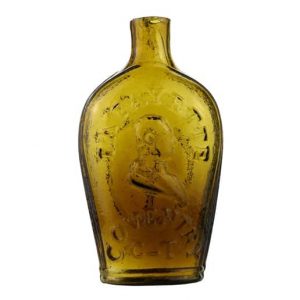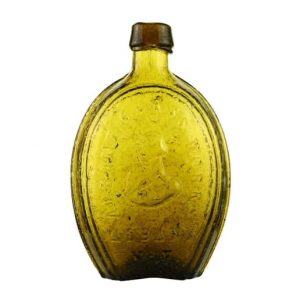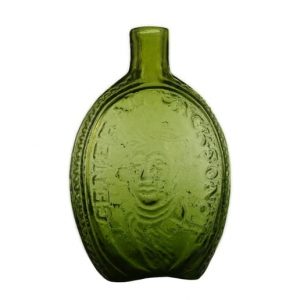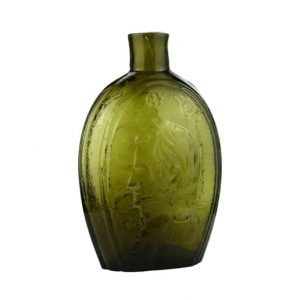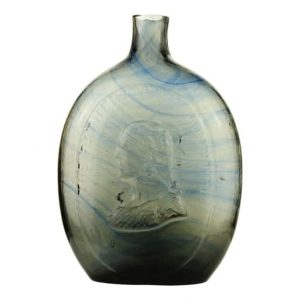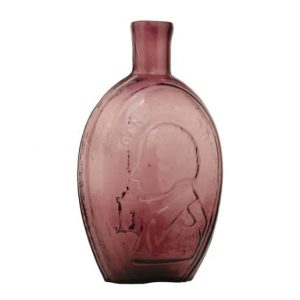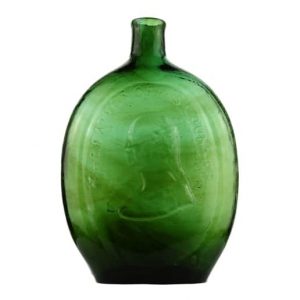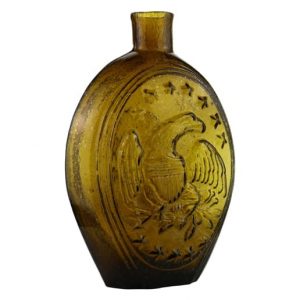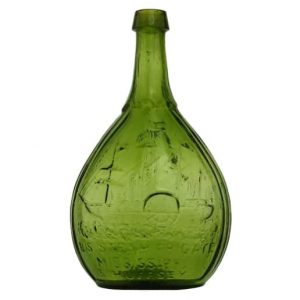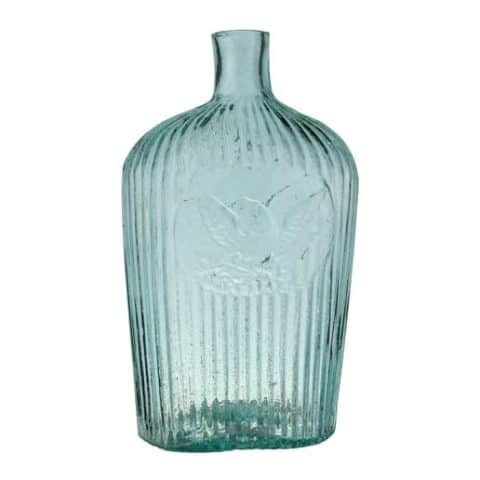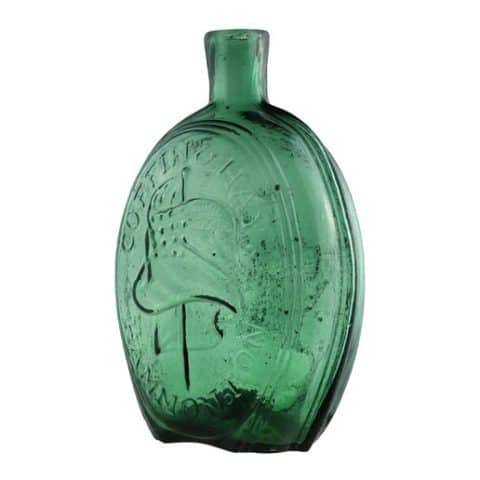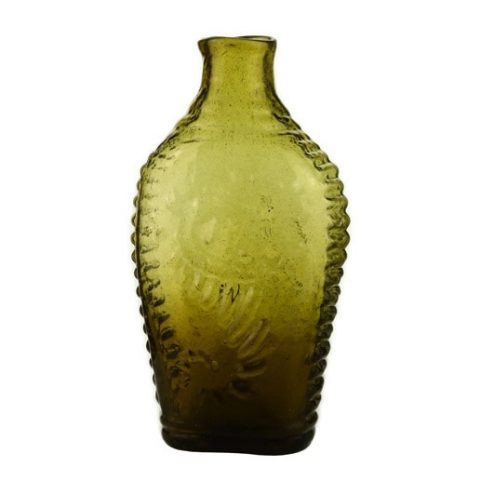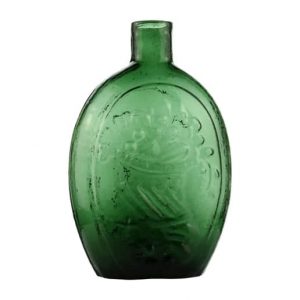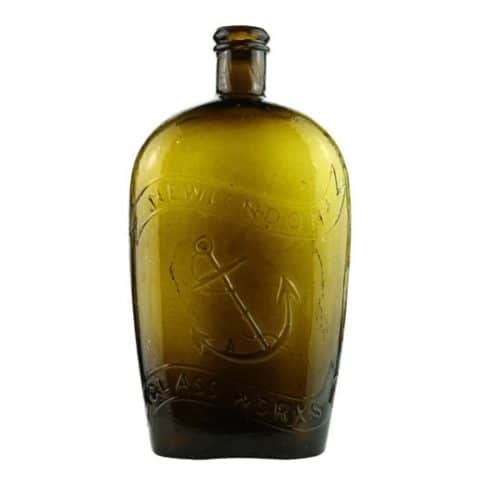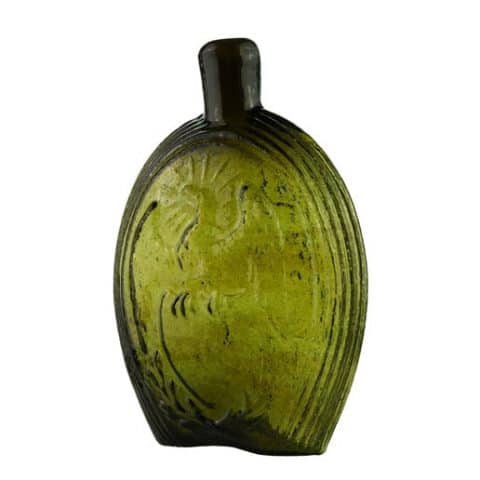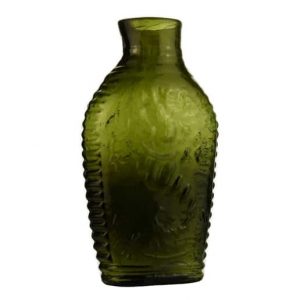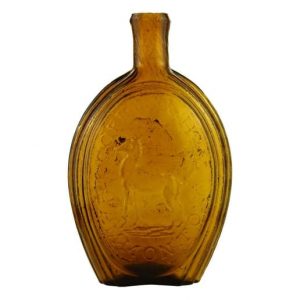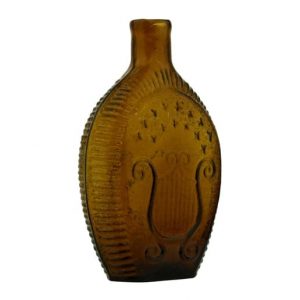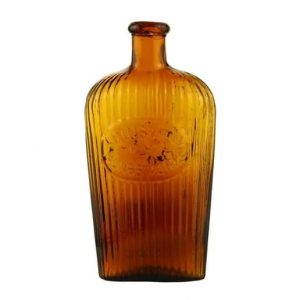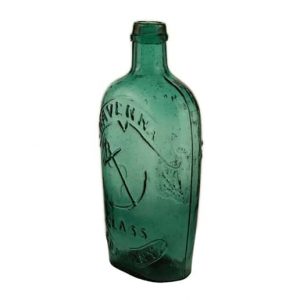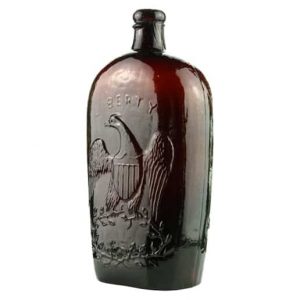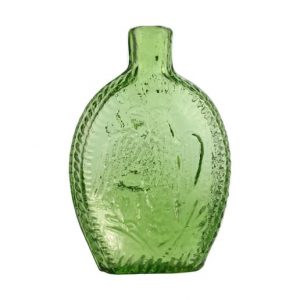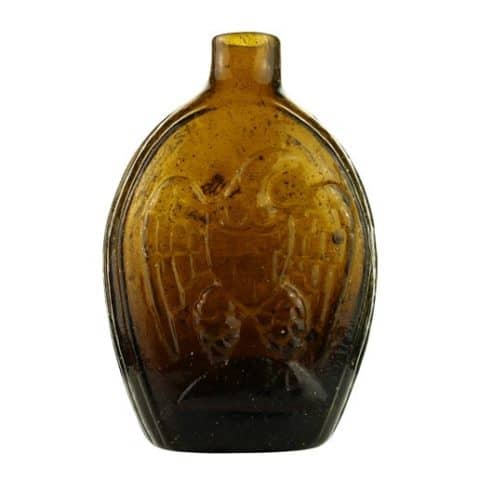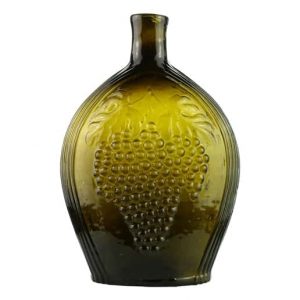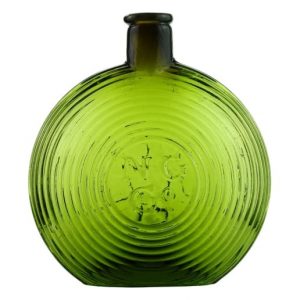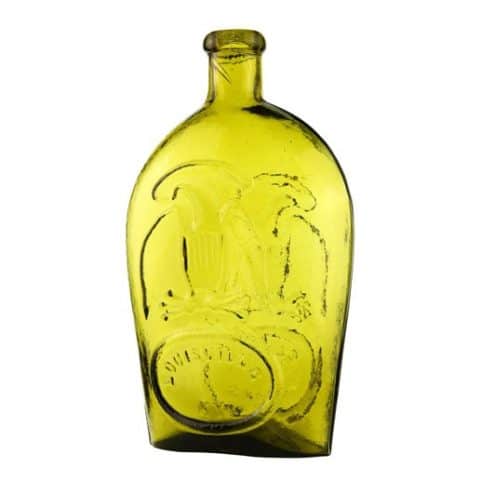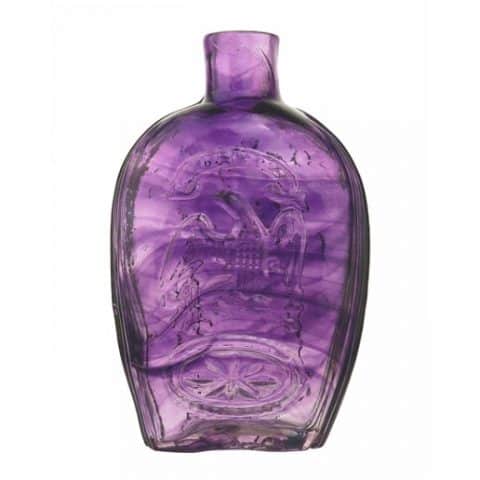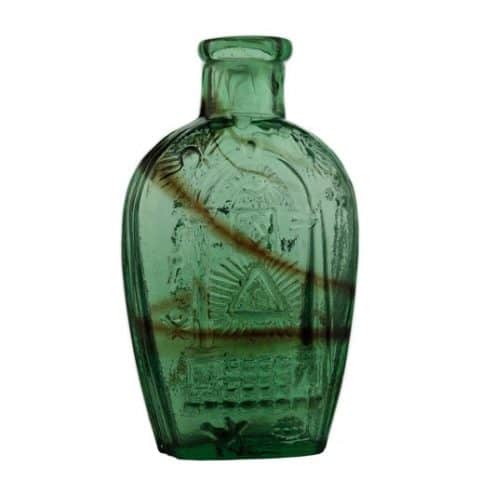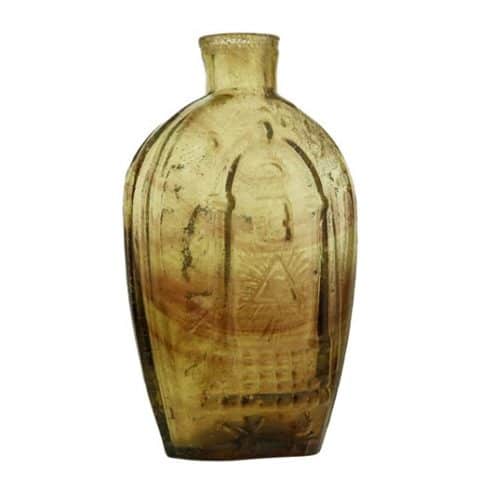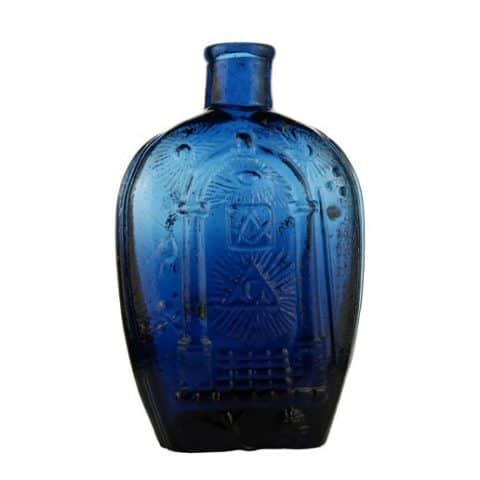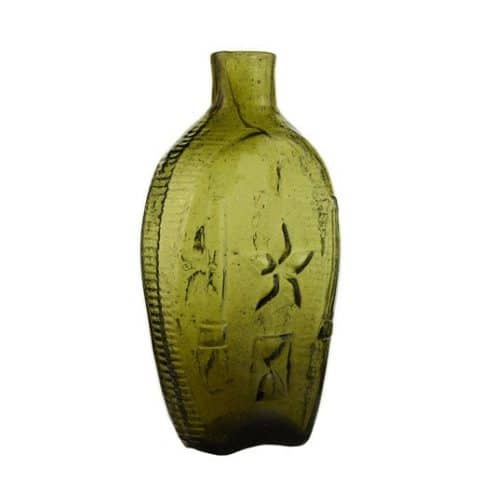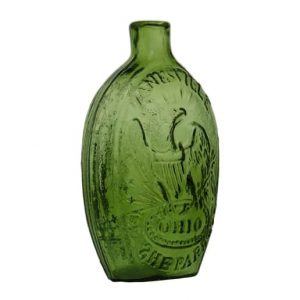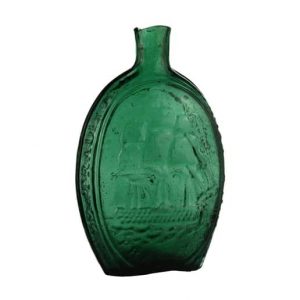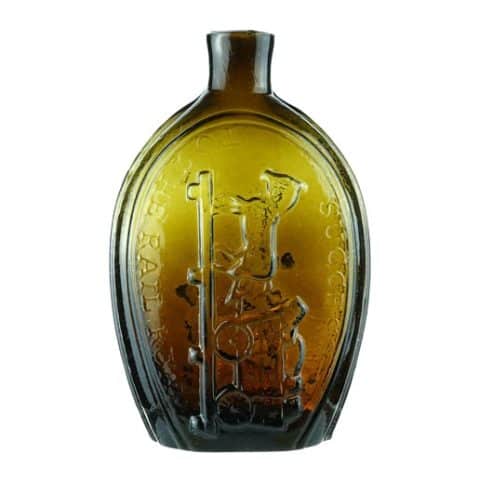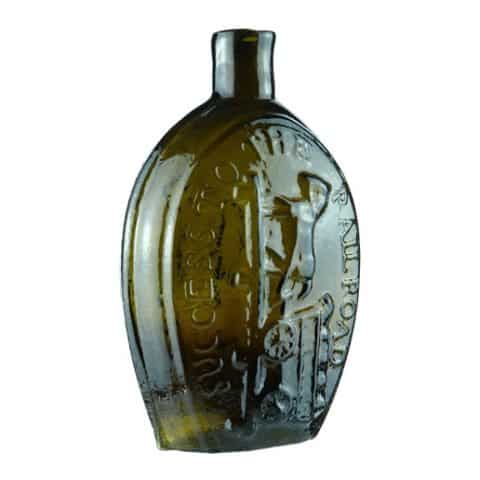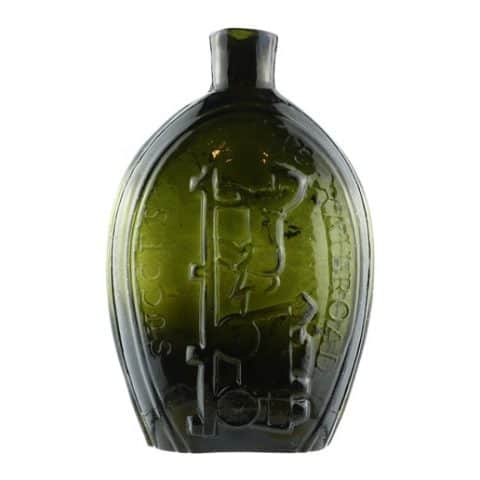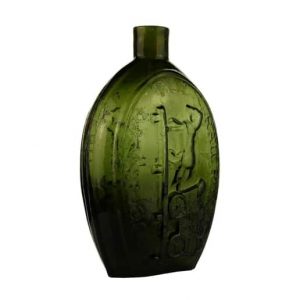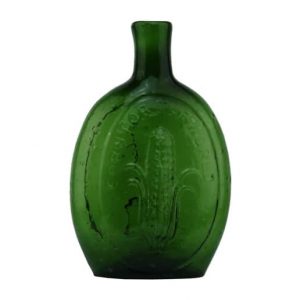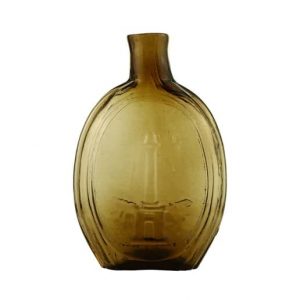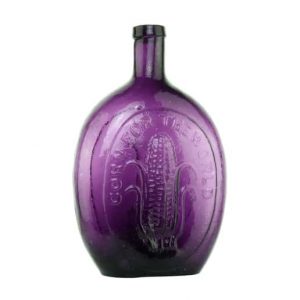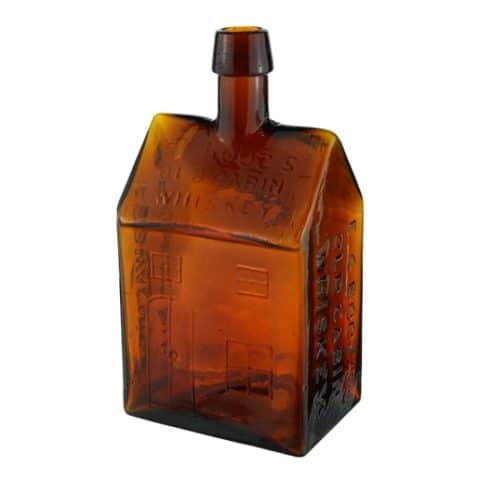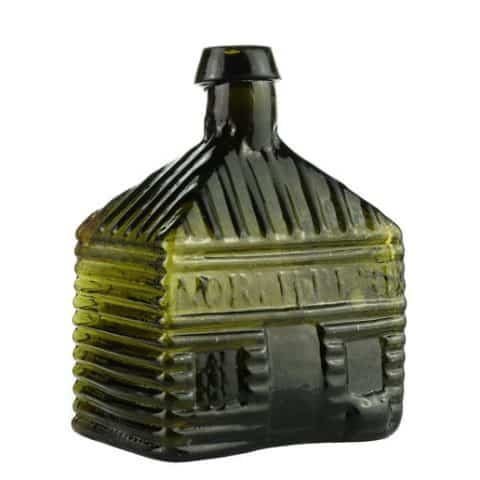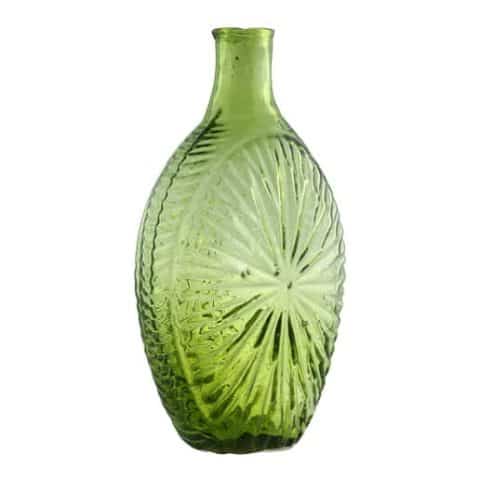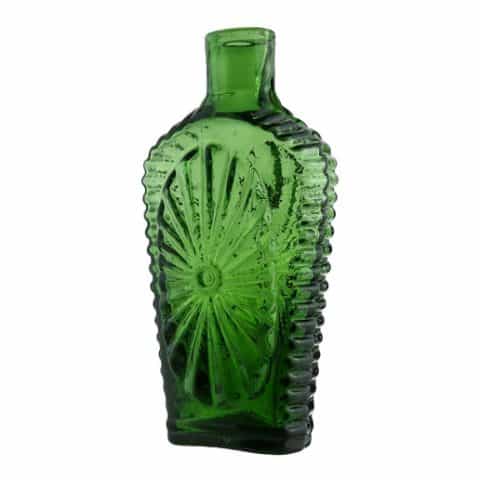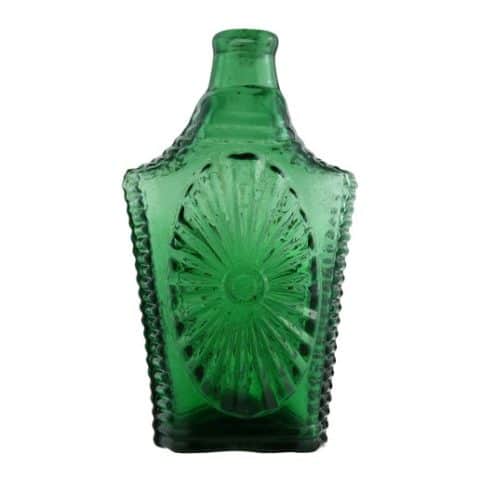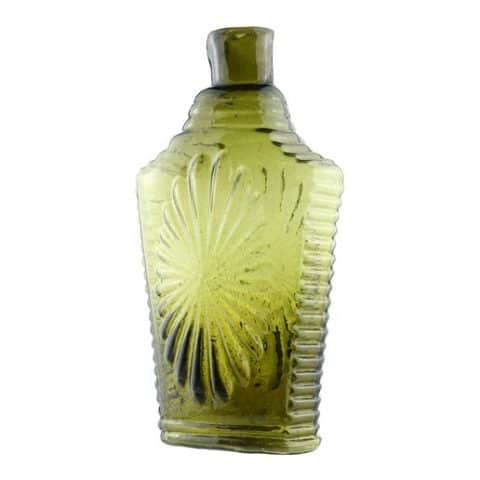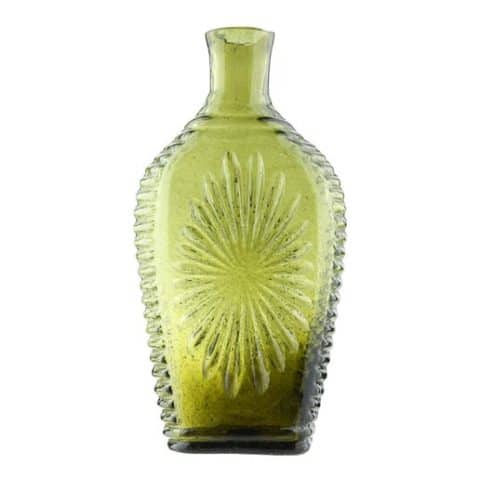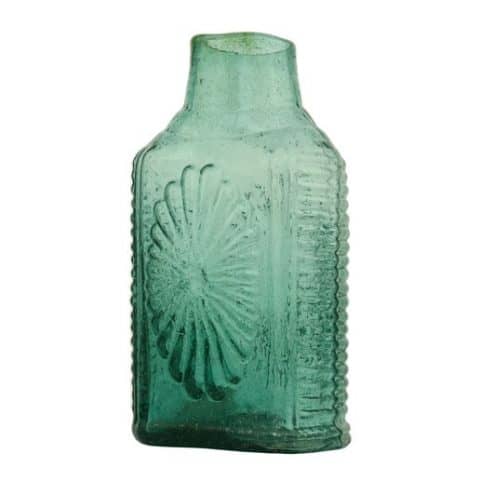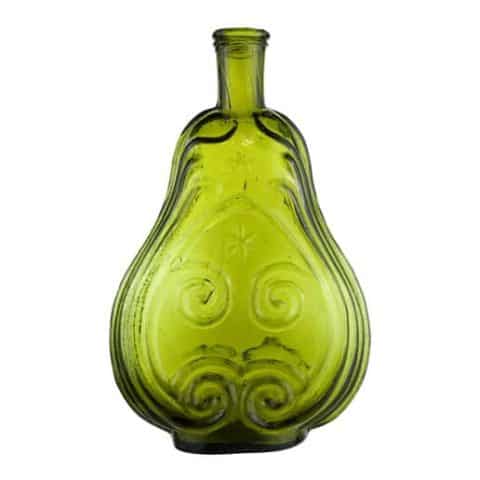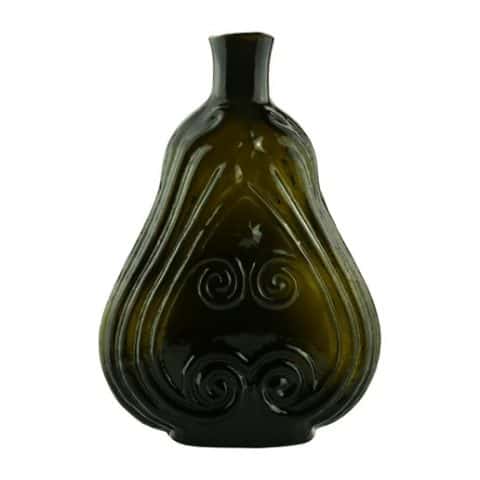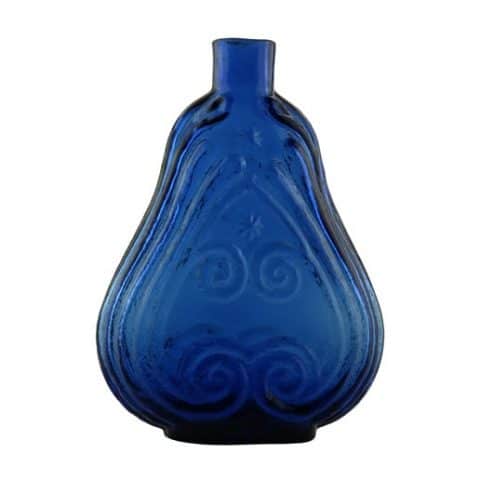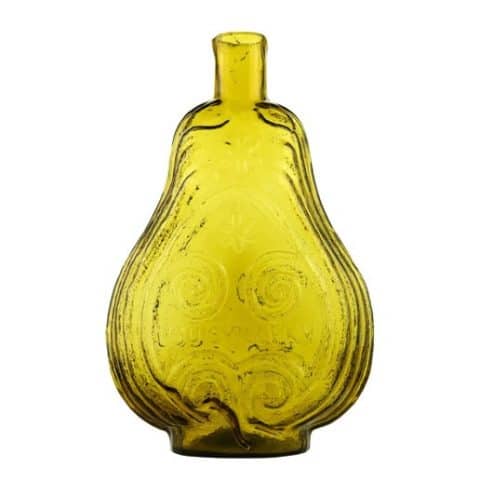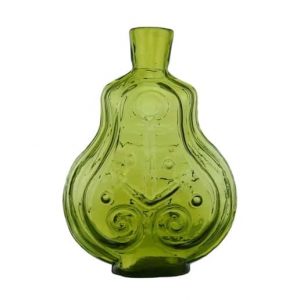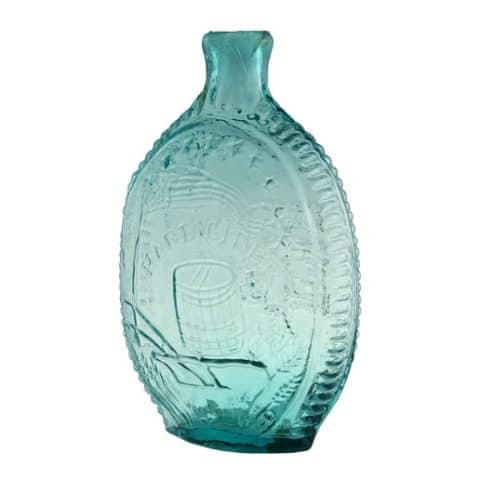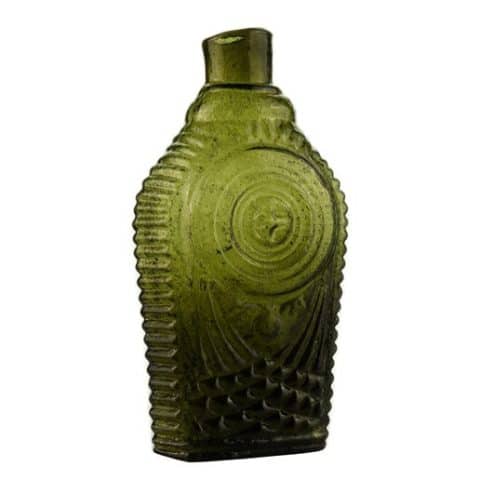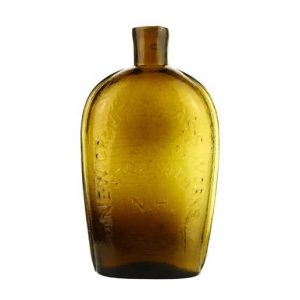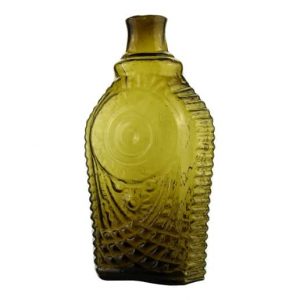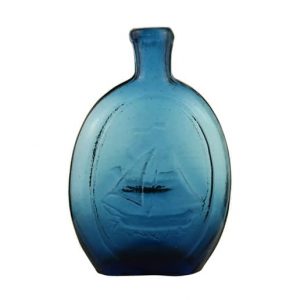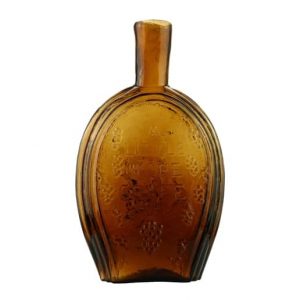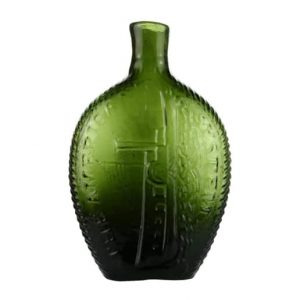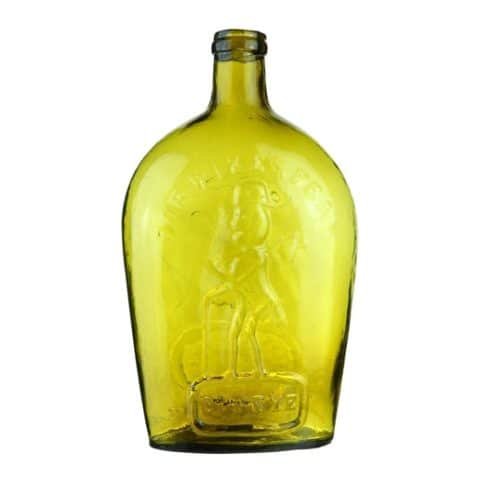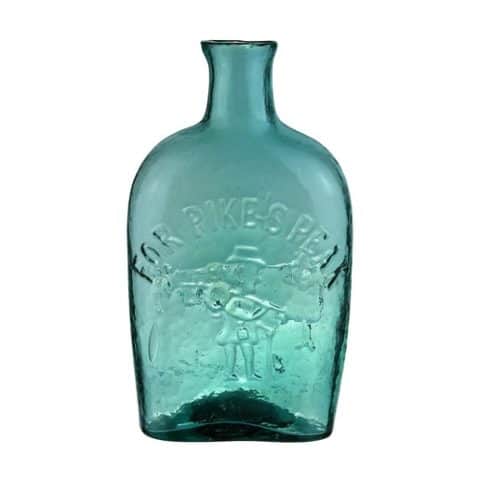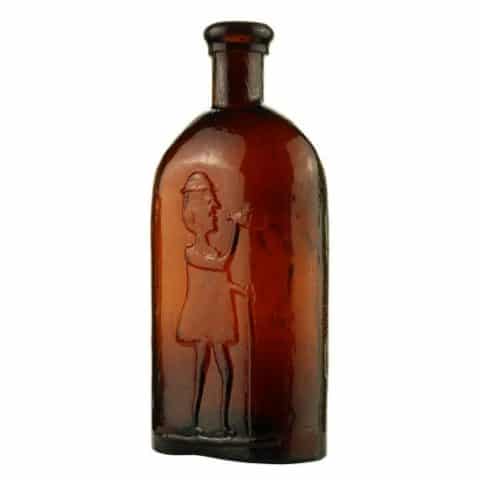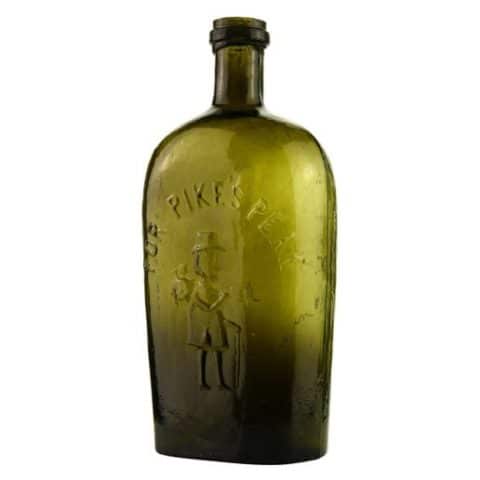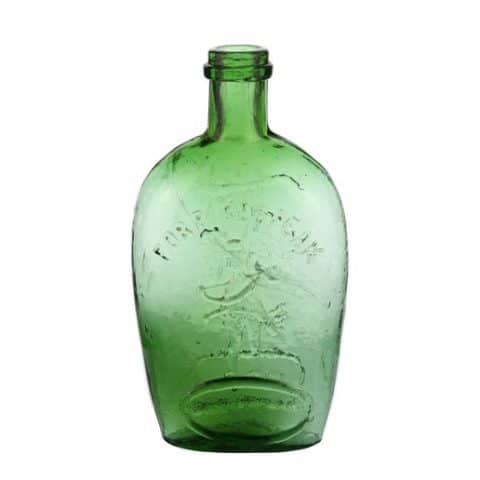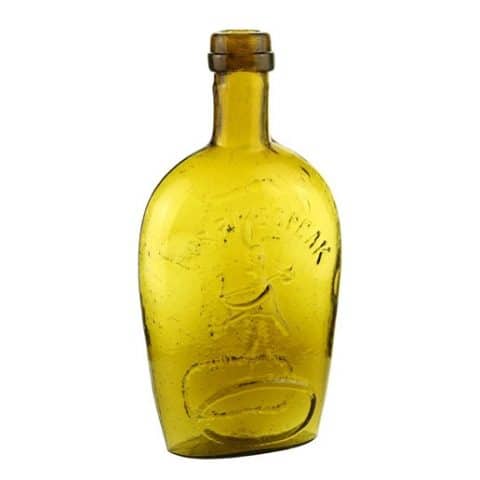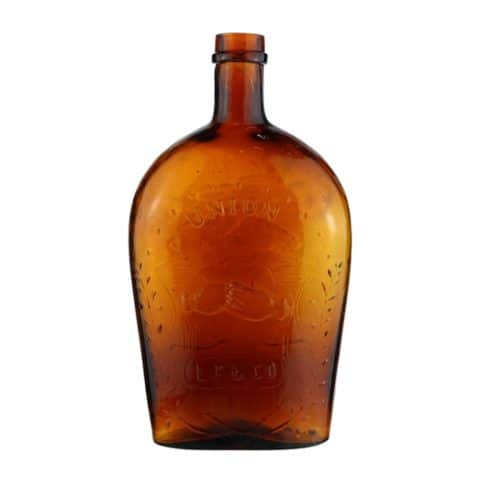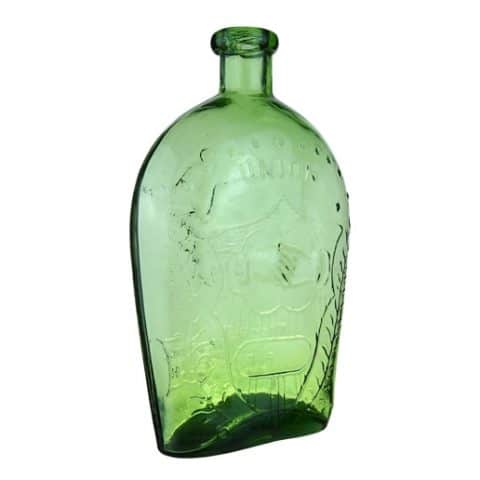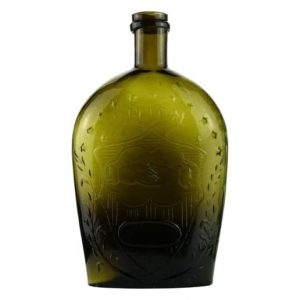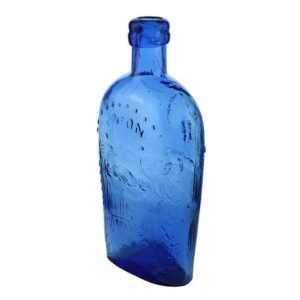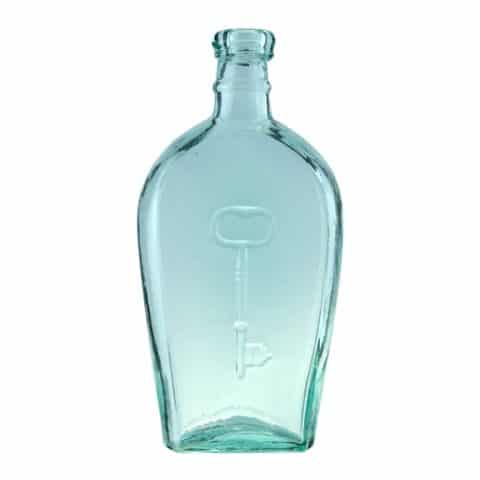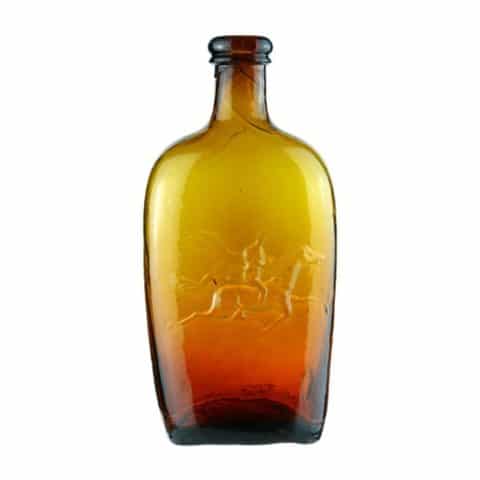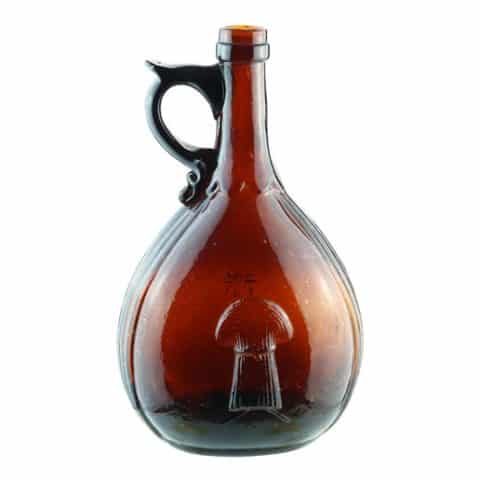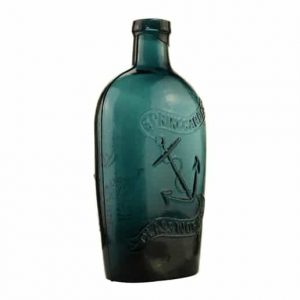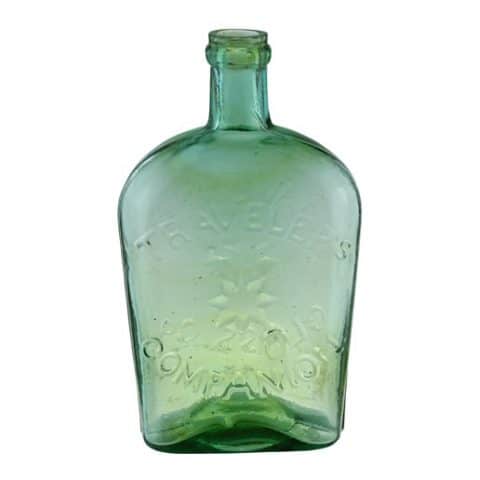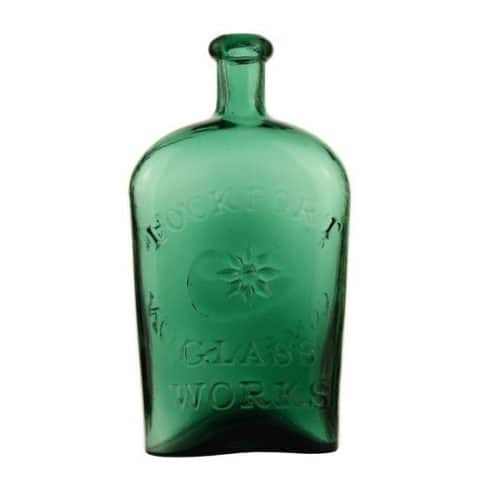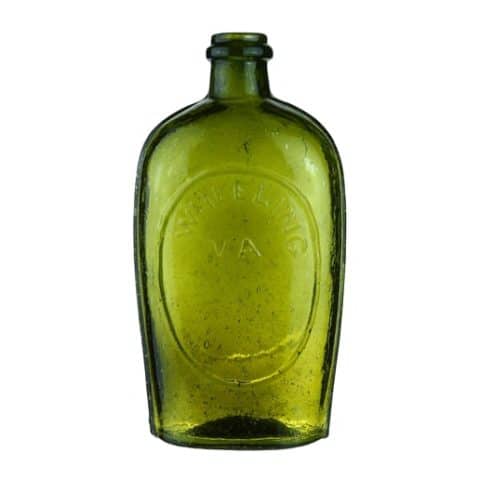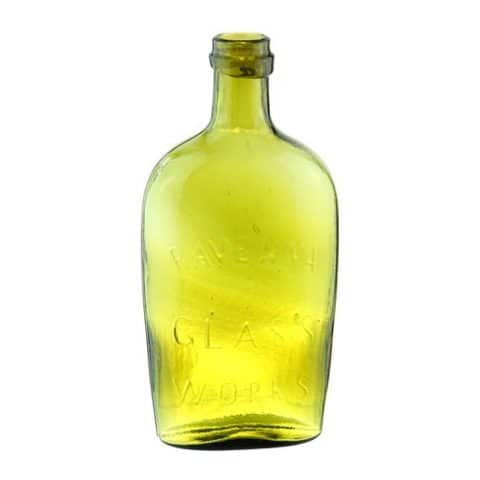GVII-2 “TippecanOe” Cabin
GVII – 2
“Tippecanoe” Cabin
Mount Vernon Glass Works
Vernon, New York
Emerald Green Pint
Provenance: Anonymous
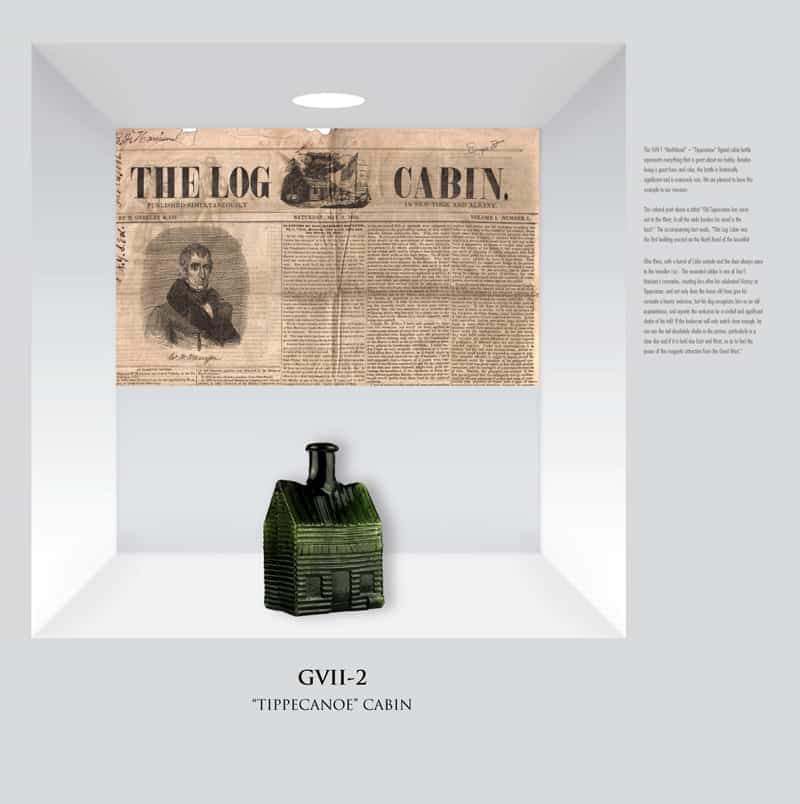
“Tippecanoe” is a nickname for William Henry Harrison from his role in the Battle of Tippecanoe. Harrison was also the ninth president of the United States from March 1841 to April 1841. “Tippecanoe” is also embossed on one of the finest pieces of early American glass ever made.
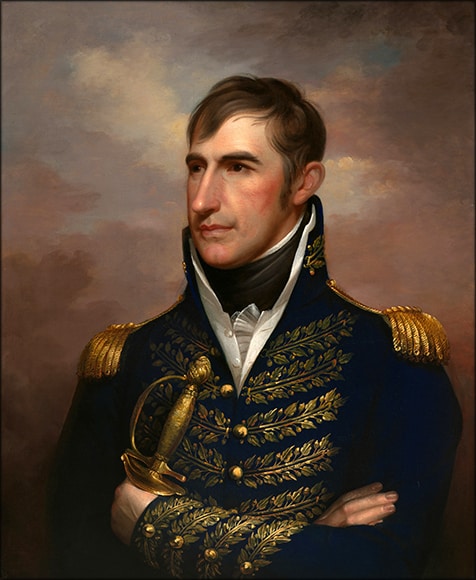
William Henry Harrison was born in Charles City County, Virginia, the son of Founding Father Benjamin Harrison V and the paternal grandfather of Benjamin Harrison, the 23rd president of the United States. He was the last president born as a British subject in the Thirteen Colonies before the start of the Revolutionary War in 1775.
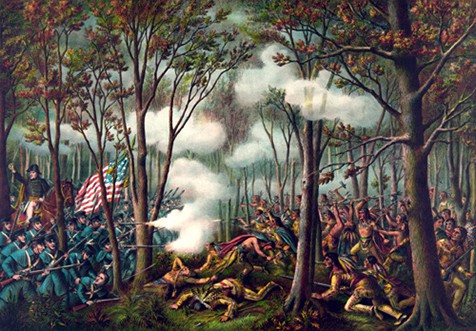
Library of Congress, Washington, D.C.
During his early military career, Harrison participated in the 1794 Battle of Fallen Timbers, an American military victory that effectively ended the Northwest Indian War. Later, he led a military force against Tecumseh’s Confederacy at the Battle of Tippecanoe in 1811, where he earned the nickname “Old Tippecanoe.” He was promoted to major general in the Army in the War of 1812, and in 1813 led American infantry and cavalry at the Battle of the Thames in Upper Canada.
William Henry Harrison was one of three opposition candidates for president in 1836, coming in a respectable second behind Martin Van Buren. By 1840, with the nation in the grips of depression, Van Buren was vulnerable, and the opposition, now organized as the Whig Party, rallied behind Old Tippecanoe.
“Give him a barrel of hard cider and a pension…and take my word for it, he will sit the remainder of his days in his log cabin.”
one Democrat
“Give him a barrel of hard cider and a pension…and take my word for it, he will sit the remainder of his days in his log cabin.” This was how one Democrat reacted to the news that William Henry Harrison would be the Whig candidate for president in 1840. It probably cost Martin Van Buren the election.
The campaign that followed was unprecedented, utilizing every available form of propaganda to mobilize voters. The Whigs turned the Democrats’ characterization of Harrison as an ignorant rustic to their advantage, transforming their candidate into a romantic figure, the soldier-statesman in homespun, a spokesman for the common man.
The log cabin and cider barrel came to symbolize Harrison’s candidacy. The imagery was exploited to its full potential, appearing on everything from clothing buttons to dinnerware. Harrison toured the country and spoke before crowds of thousands, the first candidate to stump on his own behalf.
Bottles of whiskey in the shape of log cabins were dispensed, and by the end of the campaign, there were parades miles long of voters singing, drinking, and chanting, “Tippecanoe and Tyler Too!” John Tyler of Virginia was Harrison’s running mate. The strategy worked, Harrison won the election, and the Whigs took both houses of Congress.
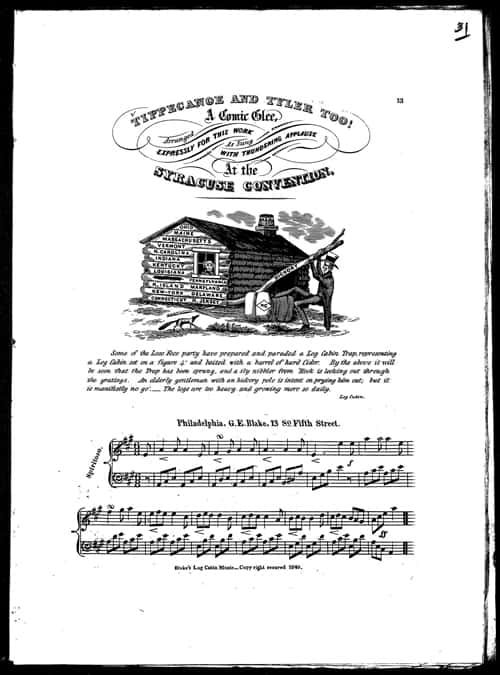
The song “Tippecanoe and Tyler Too”, originally published as “Tip and Ty”, was a popular and influential campaign song of the Whig Party’s colorful Log Cabin Campaign in the 1840 United States presidential election. Its lyrics sang the praises of Whig candidates William Henry Harrison and John Tyler while denigrating incumbent Democrat Martin Van Buren. The song sang Harrison into the presidency. Today the slogan Tippecanoe and Tyler Too is better remembered than the song itself.
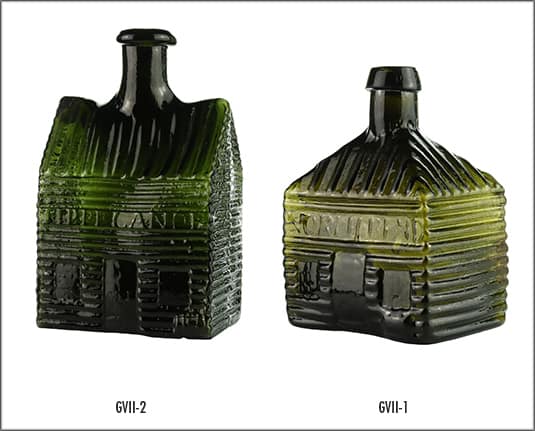
To accompany our museum example of a four-roofed GVII-1 Northbend – Tippecanoe figural cabin, we are extremely pleased to have on display the older two-roofed brother. The GVII-2 Tippecanoe is almost square in length and breadth and has a two-roofed or gable roof. This figural cabin bottle is taller than the GVII-1 and even tougher to find. Attesting to its rarity and desirability, a GVII-2 was estimated to bring $15,000 to $25,000 when the Blaske Collection was auctioned in 1983.
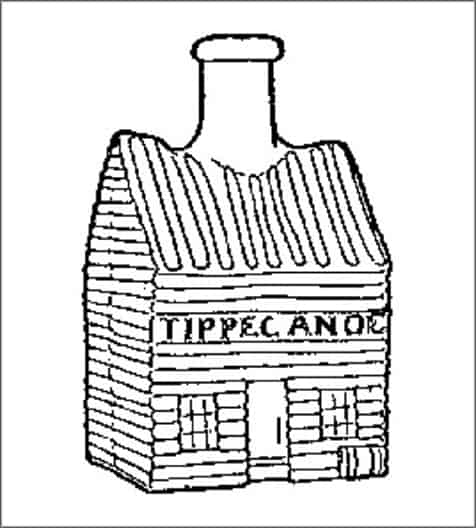
When describing the flask, you see embossed copy reading ‘TIPPECANOE’ with three horizontal ribs representing logs above and three horizontal ribs, again logs, below. The two windows have nine panes and are placed on each side of the central door. The door has a rope latch to the right. There is a cider barrel on the bottom right of the cabin that is resting on its side. The reverse of the cabin also has the embossed copy reading ‘TIPPECANOE’ and is similar to the first side. Both sides or ends are fully covered with horizontal logs. The cabin has a rounded collar or mouth sitting on the neck which is pushed into the roof. There is a pontil mark on the bottom. Whoever made this mold was truly an artisan, both in design and workmanship.

There are only two known examples. One is in the Corning Museum of Glass and the other resides in a private collection. The only known colors are dark emerald green and a very dark olive green (almost black). The flask was produced at the Mt. Vernon Glass Works in Vernon, New York.
McKearin’s has added that this cabin flask was probably produced before the GVII-1 because of the inscription “NORTHBEND” on GVII-1 which was used in the Henry Harrison campaign for president.
Support Image: Log Cabin Flask, Dark olive green (black) glass; mold-blown; applied lip, pontil mark. Obverse: in form of a log cabin with gable roof; bottle taller and almost square in width and breadth; door slightly different from GVII-1 and latch string at right; three horizontal ribs representing logs above and below rectangular frame carrying the inscription “TIPPECANOE”. Reverse: similar to obverse (“TIPPECANOE.” on both sides). Ends and roof: on each side of the roof nine heavy vertical ribs and on each end twenty-seven ribs representing logs. – Corning Museum of Glass (Provenance: Mrs. Arthur S. Johnson)
Support: Primary Image: The GVII-2 “Tippecanoe” cabin imaged on location by the FOHBC Virtual Museum Midwest studio led by Alan DeMaison.
Support: Reference to Tippecanoe and E. G. Booz Too! by Thomas C. Haunton, Fourth Edition, Jerseyana Antiques and Collectibles, 2017
Support: Reference to American Bottles and Flasks and Their Ancestry by Helen McKearin and Kenneth M. Wilson, Crown Publishers Inc., New York, 1978.
Support: Reference to Historical Flasks and their Master Mold Makers by Mark Vuono, Antique Bottle & Glass Collector, June 2019
Join the FOHBC: The Virtual Museum is a project of the Federation of Historical Bottle Collectors (FOHBC). To become a member.

